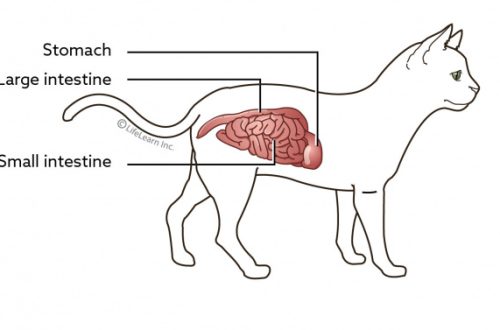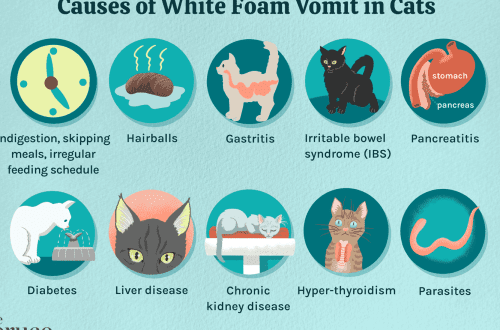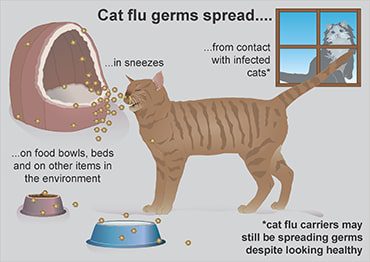
Colds in cats: symptoms, how and how to treat
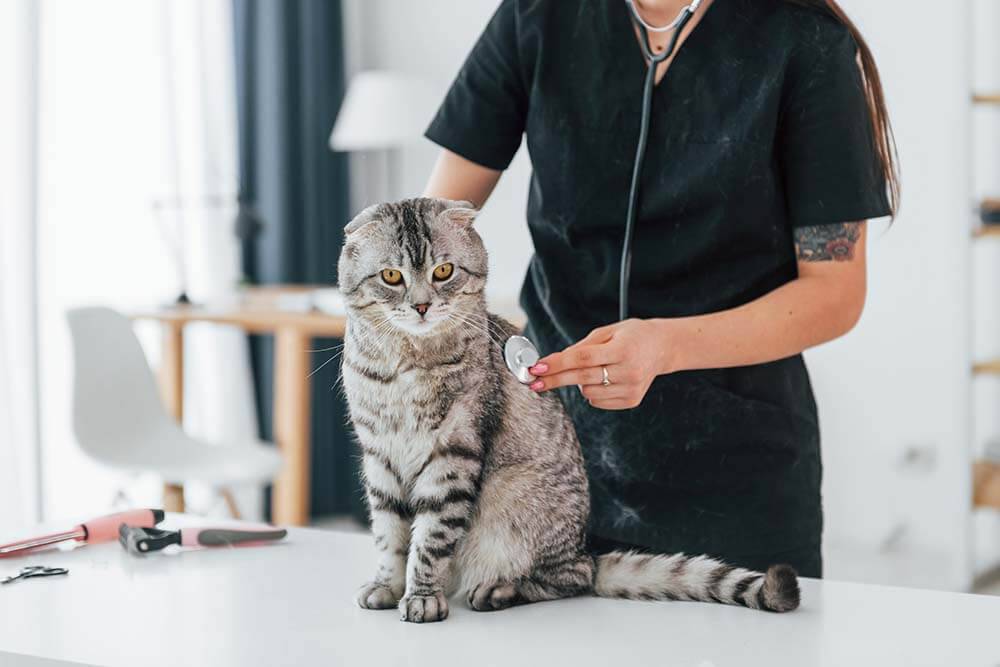
Contents
Can a cat catch a cold at all?
A cold is commonly referred to as symptoms that accompany acute inflammation in the upper respiratory tract, that is, the nose, throat and larynx. Actually, a cold is not a diagnosis, since there is always some reason that led to it. In most cases, the cause will be a respiratory bacterial or viral infection.
Owners can easily bring the infection home from the street on clothes and shoes.
Infection of a cat will occur depending on the strength of its immunity. More susceptible to the disease are very small kittens, older cats, animals with poor living conditions, cats with immunodeficiency and other chronic diseases (for example, diabetes, oncology).
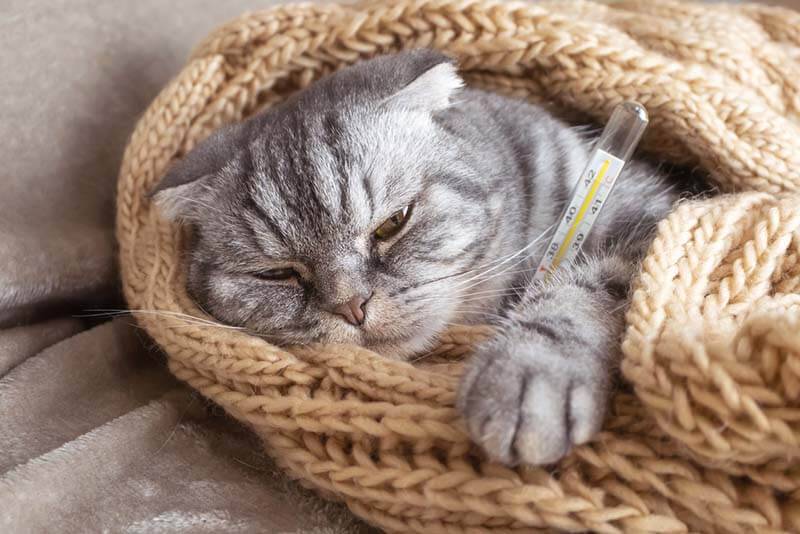
Causes of a cold
Feline herpesvirus. Herpesvirus, as the cause of colds, is most common in cats. There are studies that show that the virus can be detected in 39% of clinically healthy cats, and in catteries this level is even higher. In the presence of acute signs of inflammation of the upper respiratory tract, herpesvirus can be detected even up to 90-100% of cases.
Infection usually occurs by contact through the excretions of sick cats. Most often, at the beginning of infection, the course of the infection will be latent, that is, the cat does not show any complaints. But with severe stress, with a decrease in immunity for any reason, the course can go into an acute phase in 4-12 days. At the end of the acute phase, the virus remains in a latent (hidden) form in the body for years.
Feline calicivirus. Calicivirus is the second most common virus that affects the upper respiratory tract. It can be detected in 10-50% of cats with relevant clinical signs.
Infection most often occurs by contact or airborne droplets, but there is also a study that has confirmed the possibility of transmission of infection by fleas. Cats often ingest fleas during grooming and thus become infected. The course of the disease is usually acute, in small kittens it may be hyperacute. There are also cases of chronic calicivirus, but this condition is rare, difficult to treat and has a cautious prognosis.
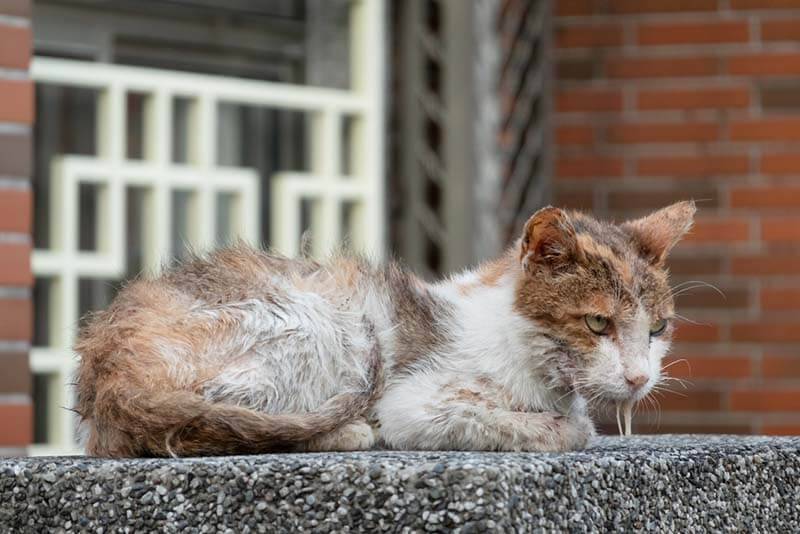
Mycoplasmosis. Mycoplasma is the smallest bacterium, which has more than 120 species. Various types of mycoplasmas are found in most animals normally and do not cause any clinical symptoms in them. However, under certain circumstances, most often with a decrease in immunity, mycoplasma can cause inflammation of various internal organs. Mycoplasma felis often causes the clinical manifestations of the common cold in cats, predominantly affecting the mucous membranes of the eye.
chlamydia. Chlamydia is an intracellular bacterium that most commonly affects the conjunctiva of cats. Unlike mycoplasmas, they almost never occur in clinically healthy cats. The main causative agent of diseases is the species Chlamydophila felis. The course of the disease can be both acute and chronic. Transmission of the infection is carried out by contact through infected secretions, care items and airborne droplets over short distances.
Symptoms of a cold in cats
Inflammation of the upper respiratory tract in cats can manifest itself in various ways. The upper respiratory tract includes the nasal cavity, larynx and pharynx. However, lesions sometimes also affect the mouth, eyes, and trachea. Common cold symptoms in cats include:
Discharge from the nose of any nature (watery, mucous, purulent).
Frequent sneezing, rarely coughing.
Profuse discharge from the eyes, similar to purulent (small clear discharge is not likely to be a sign of infection).
Increased body temperature (from 39,5 degrees).
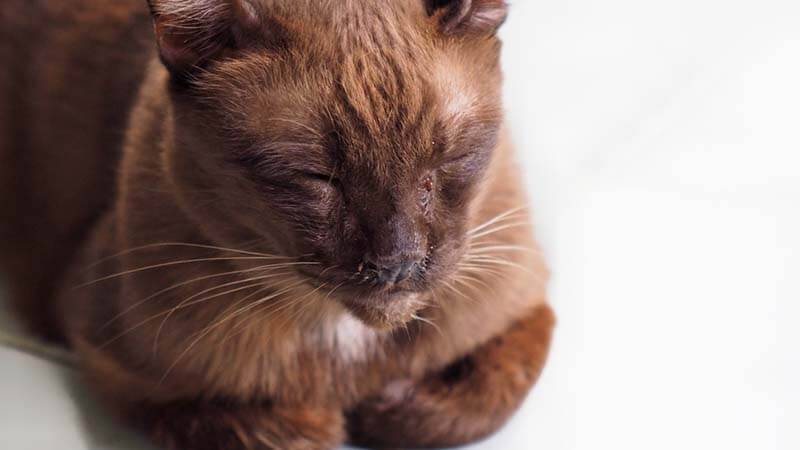
In addition to the main manifestations of a cold, cats often include general malaise, apathy, drowsiness, decreased appetite, or a complete refusal to eat. There are also unique clinical features that apply to each specific infectious agent.
herpesvirus
Herpesvirus is characterized by frequent sneezing, profuse discharge from the eyes and nose, as well as the development of conjunctivitis and keratitis (inflammation of the cornea), including ulcerative. In rare cases, ulcerative lesions of the mouth or muzzle occur, especially around the eyes and on the nose.
Calicivirus
The main distinguishing feature of calicivirus is the development of ulcerative lesions of the oral cavity, especially on the tongue and gums. In severe cases, the nasal mirror is also involved in the process, it is possible to form an extensive deep ulcer at the site of the nose. Also, with calicivirus, lameness is occasionally noted on all or some limbs.
Mycoplasmosis
Symptoms are most often mild. Usually mycoplasmosis is manifested by one- or two-sided conjunctivitis, redness of the eye and third eyelid. Initially, the discharge may be transparent, but with the course of the disease they become mucopurulent.
chlamydia
Eye lesions will most often be more pronounced than with mycoplasmosis. Both eyes are usually affected. There is a strong reddening of the conjunctiva, copious purulent discharge, often cats squint and cannot fully open their eyes. Without treatment, the eyes become covered with brown crusts.
Diagnosis of the disease
A preliminary diagnosis is made during a general examination according to the characteristic clinical manifestations. The diagnosis can be confirmed by conducting a PCR study of swabs from the conjunctiva, nasal cavity and pharynx.
Detection of calicivirus and chlamydia is most often not difficult, and a positive result will accurately indicate the presence of the disease. It is difficult to confirm herpesvirus, often a false negative result comes in the tests. This is due to the fact that the herpes virus at the time of sampling may be in the trigeminal nerve and simply will not get on the probe that was used to take the swabs.
It is often possible to detect mycoplasmosis in swabs, but it is a difficult task to interpret the result – whether mycoplasmosis was really the root cause of the disease or is there some other problem.
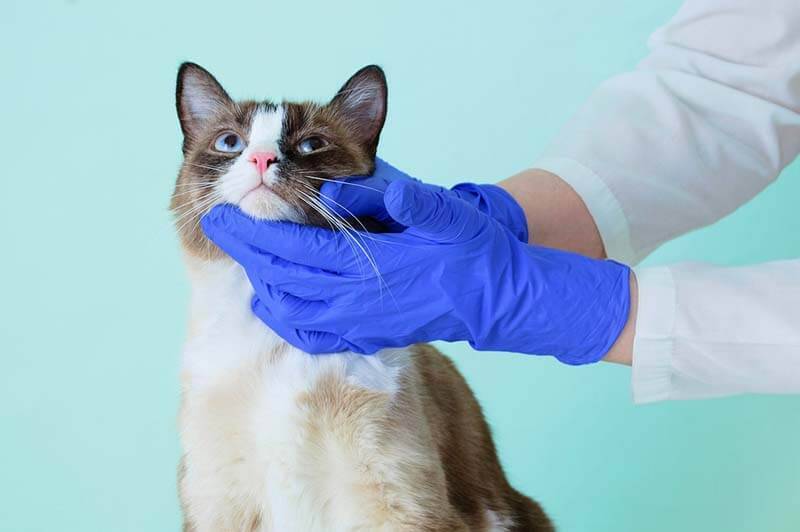
How and how to treat a cold in cats?
Before prescribing a treatment that will definitely help, you need to visit a veterinarian and pass all the necessary tests to confirm the diagnosis. Treatment of different types of bacteria and viruses can differ significantly both in the choice of drugs and in the course of their administration.
Antibiotics and antiviral drugs are usually prescribed. In uncomplicated cases, that is, when the cat is active, eats well, does not cough, treatment can be started symptomatically.
What to give a cat for a cold?
If the cat has a cold, he has nasal discharge, you can start washing with saline solutions on your own. Both normal saline and ready-made preparations from a pharmacy (for example, Aquamaris) are suitable. Salt solutions in the right concentration “pull out” the snot. If there is a lot of snot, the cat cannot breathe with its mouth closed, you can additionally apply vasoconstrictor drops in a short course (for example, Nazivin baby).
To relieve the symptoms of a cold, the use of a nebulizer has a good effect.
It is enough to pour ordinary sodium chloride into the liquid container and let the cat breathe through the mask. With discharge from the eyes, you can use a hygienic lotion from a veterinary pharmacy (Dewdrop, Diamond Eyes).
It is not recommended to independently prescribe antibacterial agents, antiviral and cough medicines for a pet, due to the presence of a large number of side effects. These medications must be prescribed by a doctor.
Pet Care
Pets with a cold usually do not require any special care. It is recommended to reduce or exclude walks on the street for the duration of treatment. Some sources recommend reheating food, but this advice has not been widely adopted.
If there are other cats at home, it is necessary to keep them separate from a sick animal in order to prevent infection. It is important to follow all the recommendations of the attending physician, most often the treatment does not present great difficulties.

cold in kittens
According to statistics, small kittens with a cold visit the clinic more often than adult animals. This is due to their still unformed immunity and greater susceptibility to infection. Clinical symptoms most often do not differ from those in adult animals.
With herpesvirus, kittens often develop ulcerative keratitis, without treatment started on time, even the removal of the affected eye is possible.
Calicivirus can proceed more quickly and more severely, a very high body temperature (from 41 degrees) and a complete refusal to eat due to extensive ulcers are possible. Such animals should be treated only in a hospital setting.
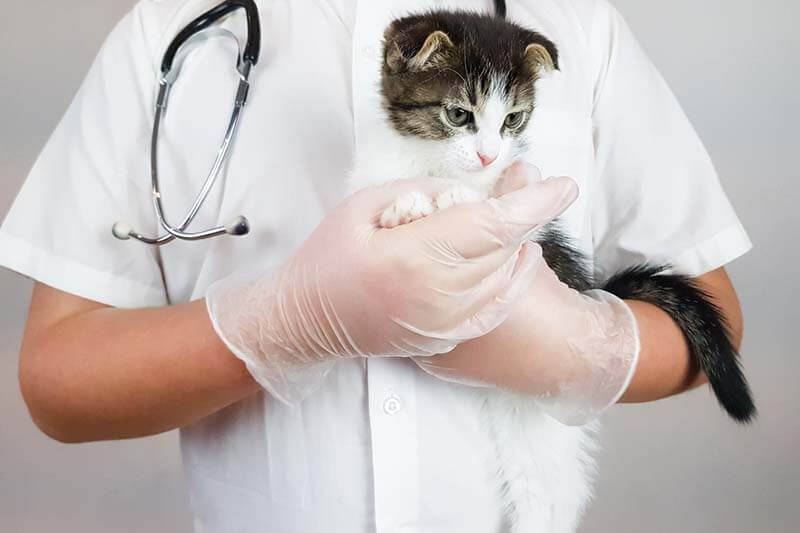
Prevention
The basis of prevention is timely vaccination. Kittens can be vaccinated from the age of 8 weeks. The basic vaccination includes infections such as herpesvirus and calicivirus. Additionally, chlamydia is often included in the vaccine. Vaccination does not always help to completely avoid the disease, but it can reduce the severity of clinical manifestations.
If you already have cats at home and you are planning to bring home a new kitten, it is strongly recommended not to let them contact the first 2 weeks. Some of the most common cases of infection in adult cats occur when a new animal is brought home without being quarantined. Various drugs – immunomodulators and sera – unfortunately do not show their effectiveness and in recent years have not been prescribed by veterinarians for the prevention of infectious diseases.
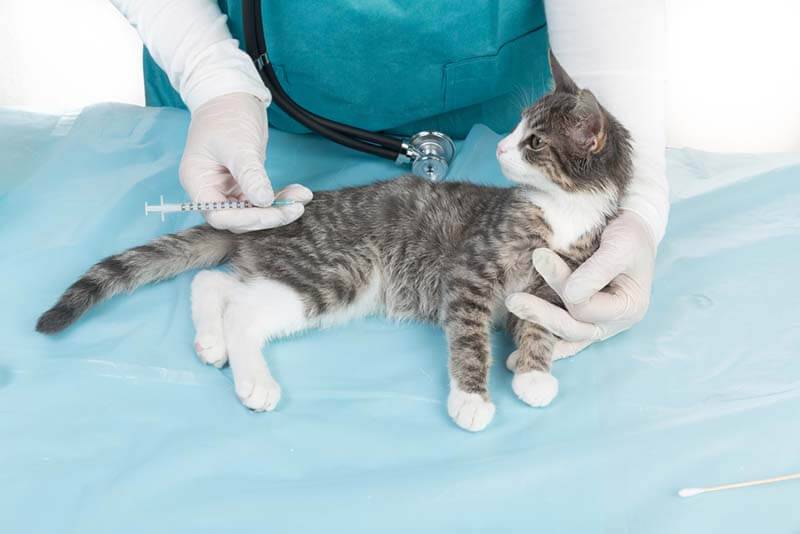
If the cat caught a cold: the main thing
The main signs of a cold in cats include discharge from the eyes and nose, and sneezing.
General well-being can either remain without any changes, or lethargy, apathy, refusal to eat can be observed.
Treatment of colds in cats includes symptomatic medications for mild cases or antibiotics, and hospital monitoring for severe cases.
The basis of prevention is timely comprehensive vaccination.
Answers to frequently asked questions
Sources:
Gaskell R., Bennett M. Handbook of Infectious Diseases of Dogs and Cats. / per. s English Mahiyanova E. B. – 2nd ed., ex. – M.: Aquarium Print, 2009. – 200 p.
Ramsey Ya. Infectious diseases of dogs and cats. Practical guide. / Ed. Ya. Ramsey, B. Tennant – M .: Aquarium Print, 2015. – 304 p.
23 May 2022
Updated: 26 May 2022



